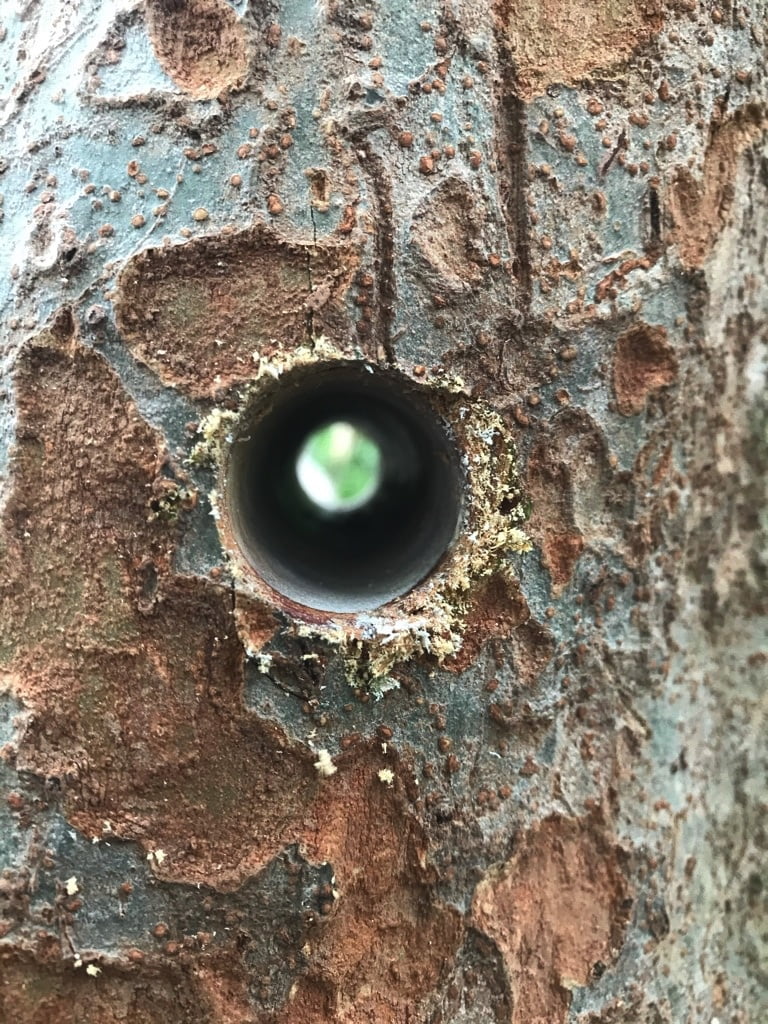Cable and Dynamic Bracing
Certain trees may lose their structural integrity due to defects, overweighted limbs, pests or disease, or adverse weather. Cabling and bracing will help to support the tree, which will reduce the likelihood of failure and help you avoid having to remove the limb or tree outright.
The Tree Company specialises in a variety of bracing options, including Dynamic Bracing, Steel Cable Bracing and Steel Rod Bracing.

Dynamic Bracing
Dynamic Bracing is made of 18mm-24mm, UV-stabilized, hollow braided polyester rope. Dynamic bracing is a good option when constant mechanical support is not required.
This kind of dynamic bracing provides support between two or more opposing stems, the brace is installed generally 2/3rds the height of the stem above the union and is spliced in the tree around stems and branches. This brace provides support to branches and stems in extreme weather, reducing the likelihood of failure. It is also used for peace of mind when large stems or branches overhang high use areas.
Dynamic braces should be inspected and adjusted every 2 years by a qualified Arborist and replaced when they pull too tight to adjust, or every 5 years.
Steel Cable Bracing
Steel cable and rod bracing are used to provide supplemental support to opposing stems and individual branches.
Cables and rod braces provide constant mechanical support by limiting the movement of the branches and stems. When a tree has a structural defect or condition that poses a high risk of failure, which may result in injury or property damage, a supplemental support system can often reduce the risk and significantly increase the tree’s useful life expectancy.

Steel Rod Bracing
Threaded galvanised metal rods are installed through the unions of split or included branches and stems, intended to provide rigid support from twisting forces and tension forces that may otherwise cause these unions to fail.
Multiple steel rods are installed in parallel through unions. Threaded rod braces are also used to fasten together with a branch or stem union that has already split or cracked and is usually accompanied by at least one cable in the upper canopy.
